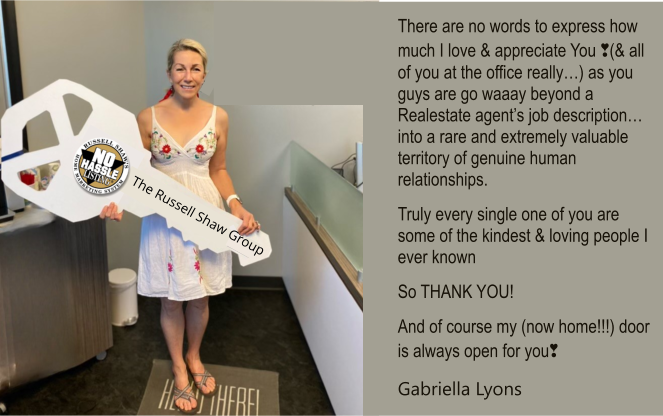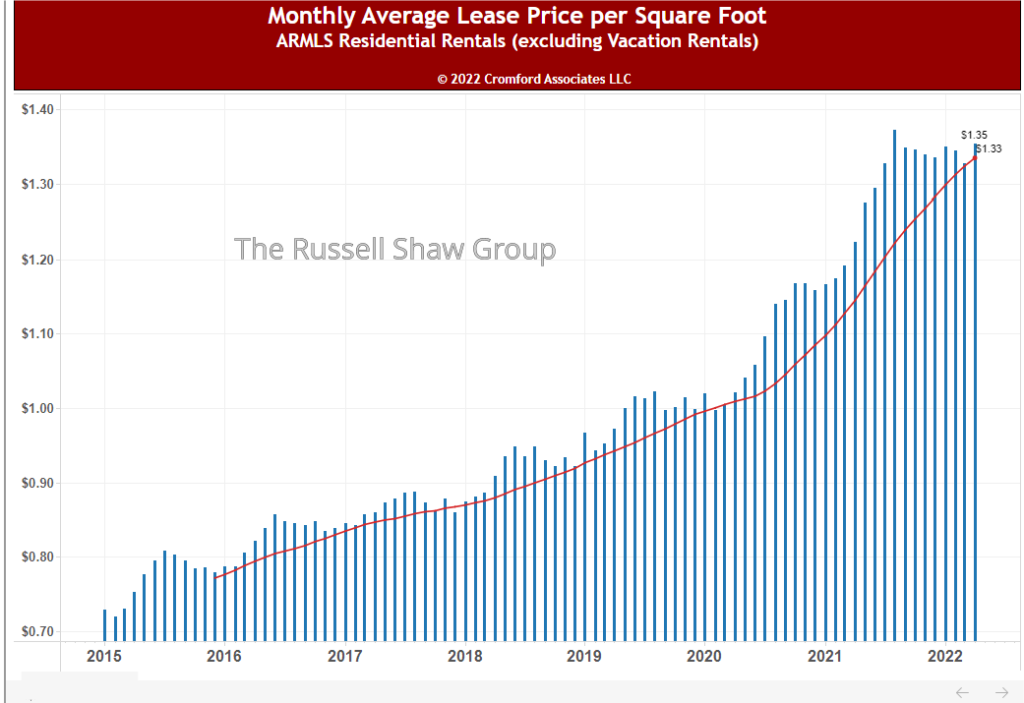“Only when the tide goes out do we discover who’s been swimming naked”
– Warren Buffet
It is a sobering time for the housing market. The last two years has been like an unending drunken party. Home Buyers enjoyed record low interest rates making home ownership more affordable, despite rising home prices, than the equivalent rental. Home Sellers watched their home values soar courtesy of scarce supply and above normal demand. But all parties come to an end and it seems very clear that March was the beginning of the end. The number of properties for sale has more than doubled since March, pending sales are dropping, closed sales are dropping, and the percentage of homes failing to sell is increasing. It all sounds pretty dire but despite that, we are still in a slight seller’s market. For the moment. If the current trends continue we will be in a balanced market as of Mid-August and a buyer’s market as soon as the first week of September. But history has taught us that trends are rarely systematic and predictable. To quote Michael Orr of the Cromford Report:
“If the current trend continues…. We would enter a buyer’s market in the first week of September. Of course, this is just one of billions of possible scenarios and we do not pretend to know what will actually happen. Demand could improve or get worse tomorrow and supply is equally unpredictable. You cannot foretell the future, but you can study the present. Most market observations you will see elsewhere are one to three months old. This is why we measure the market every day rather than waiting until the end of the month.”
Supply
Supply (or the lack thereof) has been the controlling factor in the housing market for the last two years. It still is – only this time it is the rapid increase of supply that is the story. “If we were just suffering deflating demand, the market would be cooling off gently. But if 34% more new listings are arriving every 4 weeks, supply is increasing just at the wrong time and it just cannot be absorbed. This is why we are seeing the fastest cooling trend that the Greater Phoenix housing market has ever experienced. What we do not know is whether the extra listings will keep coming or if this excess new supply will dry up sooner rather than later.”
Demand
It was predictable that rising costs and interest rates would dampen demand. But the fluctuations in supply and demand have not impacted all price ranges equally. The under 400K market is not seeing new listings surge – and demand still currently exceeds supply. Interestingly enough, homes in the over 2 million range also remain in low supply even though demand is down. The most vulnerable price range is the $400,000- $1 million – which has the largest amount of extra supply while also experiencing a huge drop in demand. This price range is also where a flow of new supply is being created by builders – accelerating the situation. As Michael Orr points out “The mid-range is likely to become a balanced market before the low-end or the high-end.”
Prices
For most – the biggest question is “what will happen to prices?” As we have mentioned many times, prices are a trailing indicator – not a leading one. Prices do not drop in a balanced market. In a balanced market prices simply tend to follow inflation. Prices do drop however, when demand is low and supply is greater than can be absorbed. That market favors buyers over sellers – and lower prices reflect the buying power of those limited buyers. A very good statistic to anticipate dropping prices is the listing success rate (i.e. what percentage of homes sell in their listing period). At the peak of the seller’s market 93.3% of homes sold. Compare that to January of 2008 (the nadir of the market) when the listing success rate was an anemic 20.4%. The average rate is 68.7% – which means it is “normal” for roughly a third of homes not to sell. Prices tend to decline when the rate is below 50%. As of the writing of this article – the listing success rate has dropped in the last 3 months to 84.2%. We expect this number to continue to erode. This is a statistic worth monitoring.
Message to Sellers
Sellers are now having to manage their expectations – which is difficult after years of holding all the cards. As competing supply continues to rise sharply, sellers should be prepared for more extensive marketing periods, less showings, more flexibility in negotiations, and even correcting unrealistic pricing (i.e. price reductions). As mentioned before, if our current rate of change continues a balanced market would be achieved by August. Transitioning markets such as we are in, can be tricky to manage. Most agents are ill prepared – having never been in a balanced market (much less the buyer’s market that we may be headed for). Only extreme markets hide mistakes. The agent’s ability to counsel, advise, and negotiate are getting very important again. Our best advice? Choose wisely.
44 years of experience has allowed us to see every market – and develop proven sales strategies for each. To Warren Buffet’s point – the tide is going out and we are about to see which agents have been swimming naked.
Russell & Wendy
(mostly Wendy)



